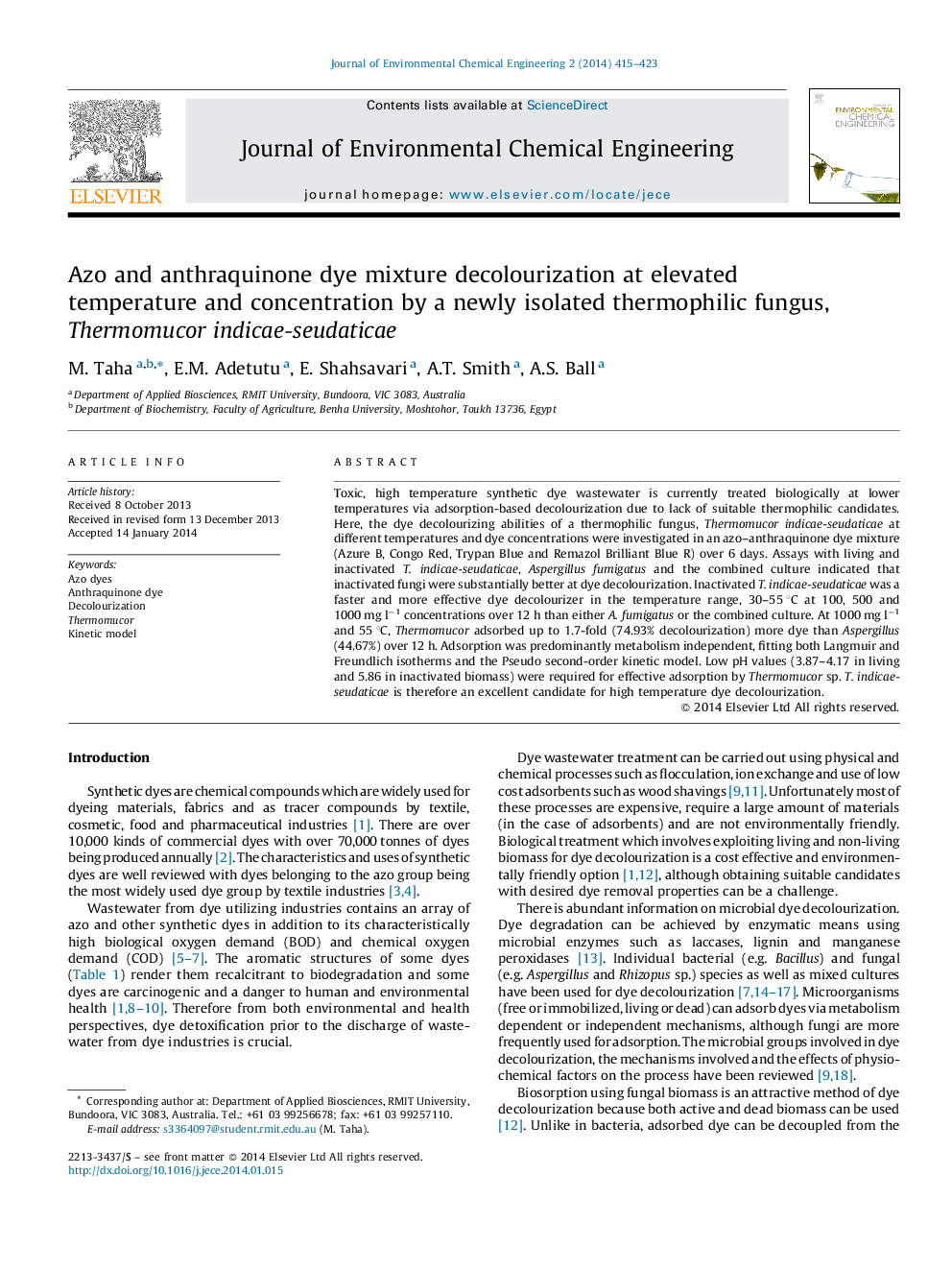| Article ID | Journal | Published Year | Pages | File Type |
|---|---|---|---|---|
| 222156 | Journal of Environmental Chemical Engineering | 2014 | 9 Pages |
•We isolated a thermophilic fungus Thermomucor indicae-seudaticae from compost.•Fungus successfully used for azo–anthraquinone dye decolourization at 55 °C.•Fungus successfully used for decolourizing dye concentrations up to 1000 mg l−1.•Excellent active and passive azo dye mixture adsorption between pH 3.87 and 6.•First report of thermophilic fungus use for dye adsorption at high concentrations.
Toxic, high temperature synthetic dye wastewater is currently treated biologically at lower temperatures via adsorption-based decolourization due to lack of suitable thermophilic candidates. Here, the dye decolourizing abilities of a thermophilic fungus, Thermomucor indicae-seudaticae at different temperatures and dye concentrations were investigated in an azo–anthraquinone dye mixture (Azure B, Congo Red, Trypan Blue and Remazol Brilliant Blue R) over 6 days. Assays with living and inactivated T. indicae-seudaticae, Aspergillus fumigatus and the combined culture indicated that inactivated fungi were substantially better at dye decolourization. Inactivated T. indicae-seudaticae was a faster and more effective dye decolourizer in the temperature range, 30–55 °C at 100, 500 and 1000 mg l−1 concentrations over 12 h than either A. fumigatus or the combined culture. At 1000 mg l−1 and 55 °C, Thermomucor adsorbed up to 1.7-fold (74.93% decolourization) more dye than Aspergillus (44.67%) over 12 h. Adsorption was predominantly metabolism independent, fitting both Langmuir and Freundlich isotherms and the Pseudo second-order kinetic model. Low pH values (3.87–4.17 in living and 5.86 in inactivated biomass) were required for effective adsorption by Thermomucor sp. T. indicae-seudaticae is therefore an excellent candidate for high temperature dye decolourization.
